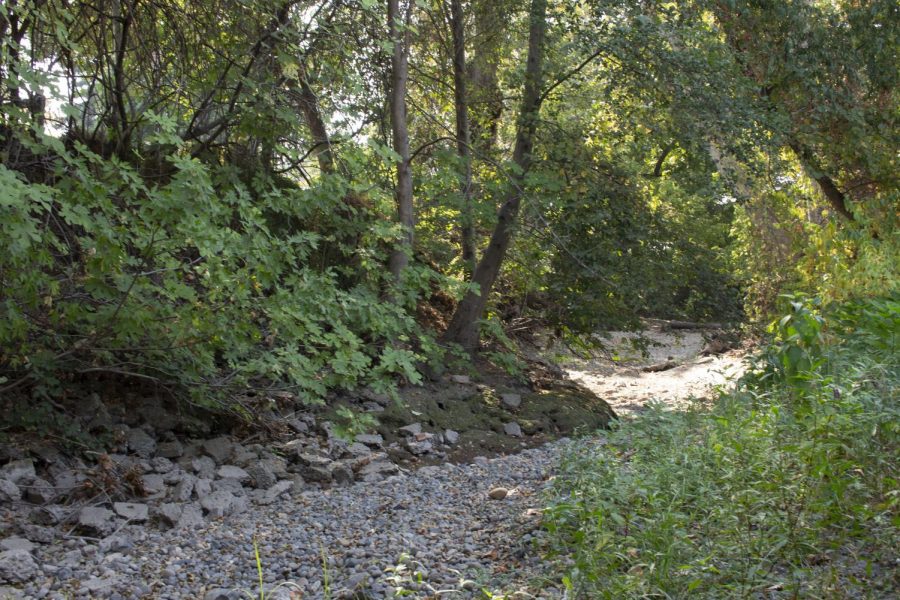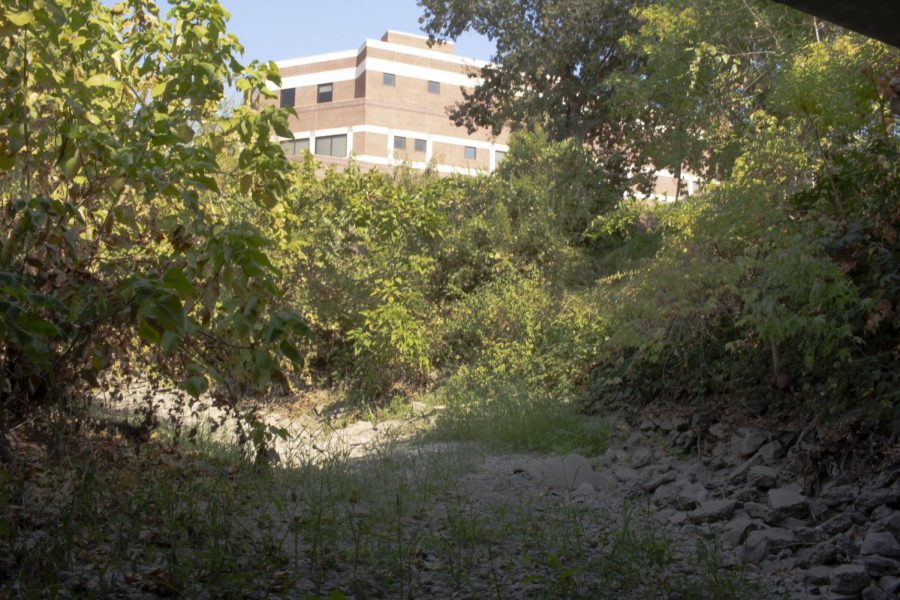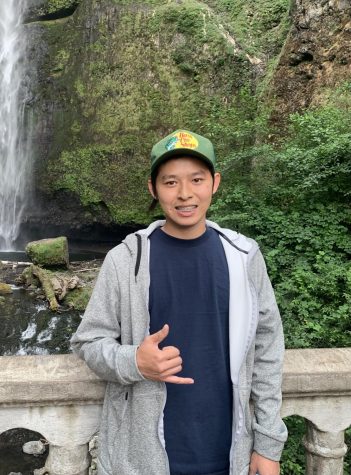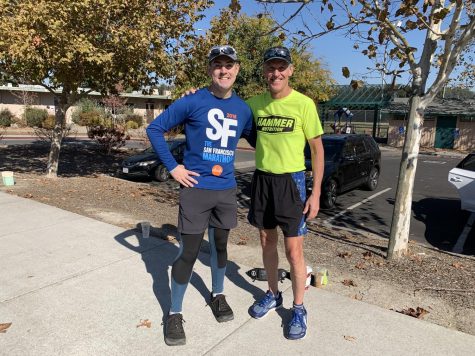The section of Big Chico Creek that runs through Chico State campus, once home to a variety of wildlife, has gone bone dry.
Sandrine Matiasek, a Chico State assistant professor of Geological and Environmental Sciences, blames the state’s terrible drought.
“I’ve seen the creek dry up on campus before,” Matiasek said. “[But] this is the longest stretch of time for which the creek is dry on campus.”
Water conversation is also key, Matiasek added.
“It’s a really evident sign of limited water resources,” Matiasek said. “We don’t often think of how the groundwater connects with the stream and what we’re seeing here is due to lower surface water flows. We’re seeing the impact of groundwater pumping on the creek flows.”
Matiasek speculates about the possible long-term impact on plants and wildlife along the creek, but expects water levels to rise this winter.
“The creek will replenish this winter. There’s no doubt about this based on when we get our first rain events; the creek will be flowing all the way through to the Sacramento River,” Matiasek said. “The creek is currently flowing in Upper Park, even at One Mile.”

A variety of animals used to congregate in the creek throughout the school. Beavers and turtles would be occasionally spotted while walking it. The creek was a haven where animals and students could seek comfort, but things have changed a lot since drought conditions got worse. Fish can no longer be spotted swimming and students aren’t wading in the water between classes.
“What rain we do get flows out quickly or infiltrates into the surrounding ground. … in a typical year you may see ‘pulses’ of water and subsequent drying of the creek on campus due to cleaning at Sycamore Pool in Lower Bidwell,” said Mandy Banet, assistant professor of Biological Sciences and Banet Lab facilitator. “When they do that the water is released, and since there is a dam there, it takes a while before it fills and begins to spill over the dam again.”
When creeks dry up, fish usually swim upstream or downstream in an effort to find deeper water holes for living. Banet said when fish aren’t able to migrate during a drought, they get trapped in pockets of water with high temperature levels that make them more prone to illnesses, since most of the native species can not tolerate high temperatures.
Banet said that most Chinook salmon found in Big Chico Creek have more genetic similarity to neighboring creeks, and most likely strayed from their group while migrating through the Sacramento River. This has caused the genetic pool of Big Chico Creek Chinook salmon to drop dramatically, allowing salmon from different creeks to become the majority.
Big Chico Creek has been historically known to have Chinook salmon migrate through its waters, but drought conditions have destroyed their spawning grounds and make salmon forget how to return to their birthing ground. When a creek dries the genetic pool of those salmon declines and their history is gone forever.
“If we get a particularly wet winter this year, it is possible that we’ll see higher flows next year,” Banet said.
Melvin Bui and Alex Martin can be reached at orionmanagingeditor@gmail.com, or
@Melvinbuii and @alexmartinjour on Twitter.










